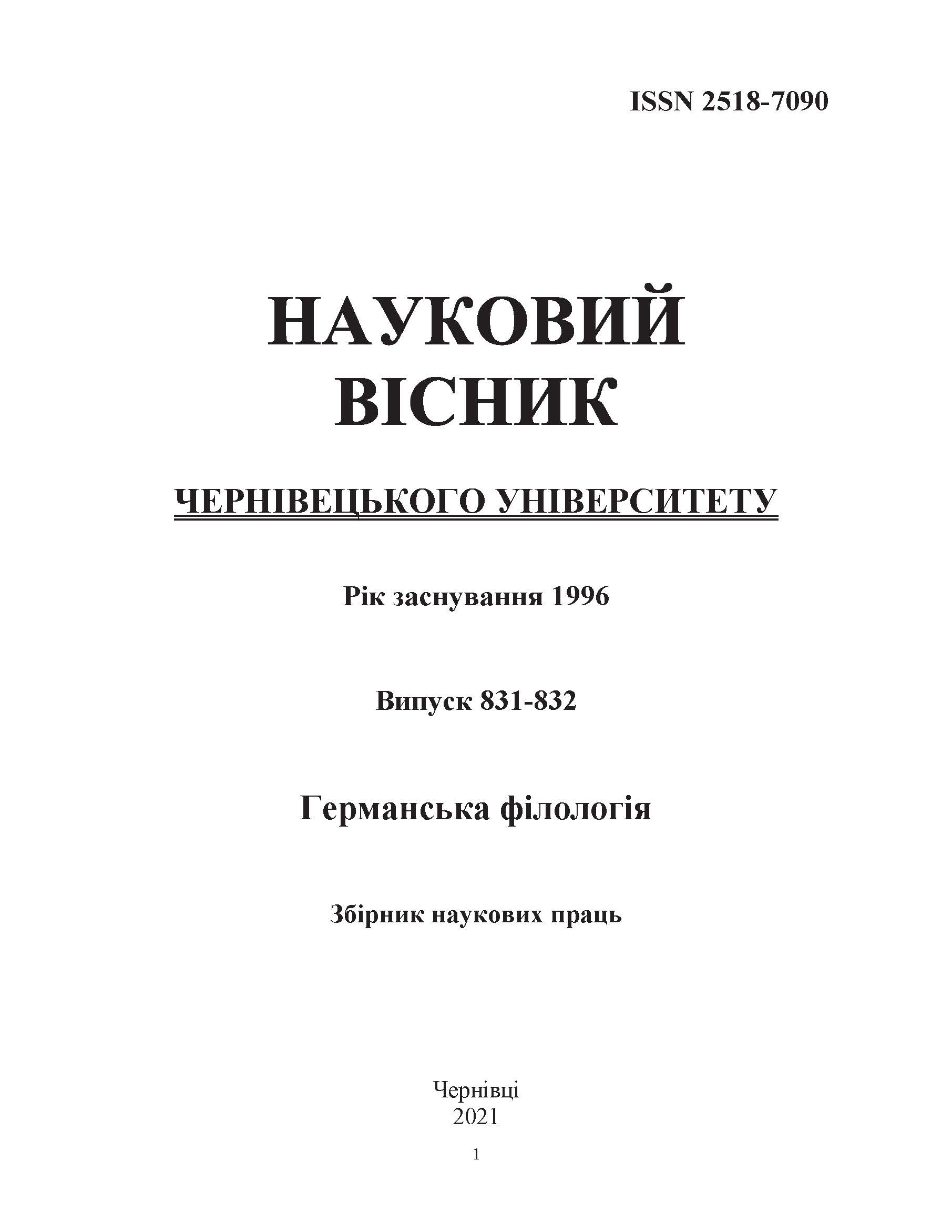ТИПОЛОГІЯ ПРЕЦЕДЕНТНИХ ІМЕН У ГАЗЕТНИХ ЗАГОЛОВКАХ
DOI:
https://doi.org/10.31861/gph2021.831-832.298-308Ключові слова:
прецедентний феномен, прецедентне висловлювання, прецедентна ситуація, прецедентний текст, лінгвокультурна спільнота, культурологічна сфераАнотація
Статтю присвячено вивченню та аналізу прецедентних імен, що належать до трьох культурологічних сфер ("Біблія", "Література", "Міфологія"), в газетних заголовках. Об’єкт дослідження – газетні заголовки сучасних англомовних періодичних видань. Предметом дослідження є типологія прецедентних імен у газетних заголовках. Мета роботи полягає в дослідженні прецедентних імен та особливостей їх функціонування у газетних заголовках. Матеріал дослідження включає електронну бібліотеку Questia Online Library, де досліджено газетні заголовки (за 2015-2019 рр.), в яких використовуються прецедентні імена, виокремленні з культурологічного словника The New Dictionary of Cultural Literacy (350 прецедентних імен, що згадуються у 12189 газетних заголовках). Для досягнення поставленої мети здійснено порівняльний аналіз прецедентних імен за трьома культурологічними сферами ("Біблія" (біблійні постаті), "Література" (імена письменників та літературних героїв), "Міфологія" (міфічні боги, персонажі)) та за дискурсами в американських та британських періодичних виданнях, що розміщені на сайті електронної бібліотеки (37 американських газет та 27 британських). Для дослідження використано такі методи, як описовий, зіставний та метод кількісних підрахунків. Обґрунтувавши поняття "прецедентні імена" та дослідивши їх ознаки та функції, доведено, що вони, як еталони культури, відомі переважно тільки представникам певної лінгвокультурної спільноти і для їх розуміння необхідні уже деякі фонові знання. Для вивчення прецедентних імен здійснено їх кількісні розподіли за культурологічними сферами та роками, а також проаналізовано частоту вживання імен в заголовках газет британського та американського дискурсів. У ході дослідження встановлено, що група "Література" є однією з найпродуктивніших джерел прецедентних імен. Також виявлено, що у заголовках за 2015- 2019 рр. найчастіше використовували імена культурологічної сфери "Література", а найменше – "Міфологія". Крім того, в результаті дослідження з’ясовано, які прецедентні імена частіше використовуються у газетних заголовках, а які – рідше.







